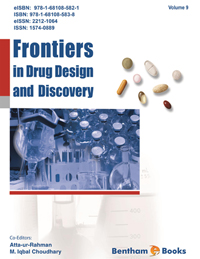Abstract
Human genome sequencing project has tremendously contributed towards the identification of GPCRs and orphan GPCRs. Currently, more than 800 GPCRs and orphan GPCRs are known. The exploration of the mechanism of the signalling pathways is imperative to understand various roles of these GPCRs, particularly orphan GPCRs. The characterization of physiological functions of orphan GPCRs through development of knockout mice has been a successful method. However, designing and development of novel molecules as agonist or antagonist, having higher efficacy, potency and better safety profile, requires consideration of a more dynamic, multipath way system that a drug can take to exert an effect. Most recently, synthetic circuits have become an important feature of electronic service delivery within the modern life science field, demanding close attention to their functionality, sustainability and usability. Some researchers have begun to examine the functionality of synthetic circuits but there is no relevant work done on software designing related to this specific field which will help to build a comprehensive model for regulatory system. The major objective of system biology is to identify all molecules and their interactions within a living cell. The knowledge about these molecules and the intermolecular interactions is critical to determine the function of human physiological system. The de novo engineering of genetic circuits, biological modules and synthetic pathways is a step towards understanding the biological machinery. The construction of genetic circuits involves proteins as input nodes (receptors), bowires (repressors and activators), or output nodes (enzymes and signaling) to the system. The intrinsic complexity of the proteins makes it difficult to correlate their sequence, structure, functions and interactions. Switching biology deals with redesigning natural proteins or designing novel proteins. An insight into the role of GPCR, its multiple interactions with other proteins, gene and other biomolecules is essential in order to design and develop better therapeutic intervention. An integrated approach combining structure based drug design, systems biology and biological circuits can help in gaining synergy in drug design. The chapter highlights the role of systems biology and biological circuits in drug discovery.
Keywords: 7TM, Biological Circuit, Bowires, De-novo, Drug Discovery, Genetic Circuit, GPCR’s, Switching Biology, Synthetic Pathways, Synthetic Biology, Systems Biology.






















